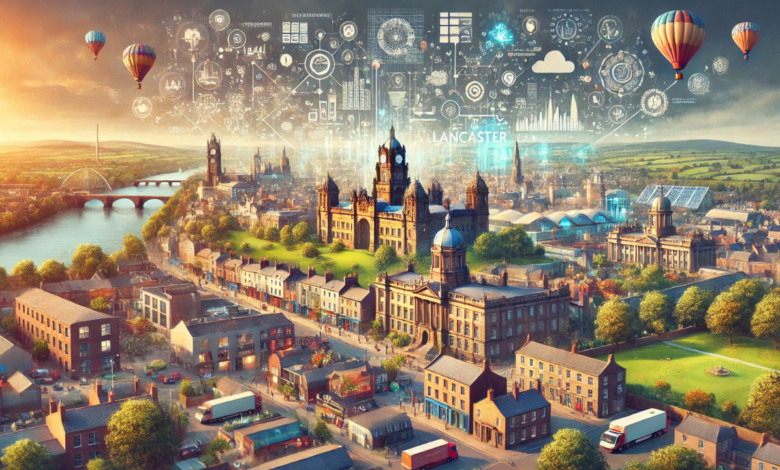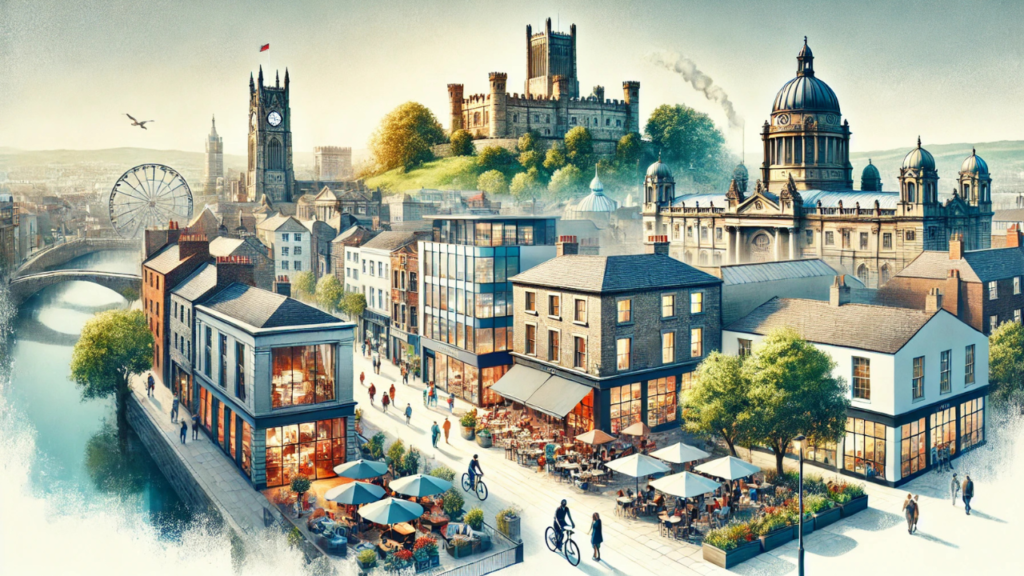Decades Lancaster: A Timeless Journey Through Fashion, Culture, and History

Lancaster, a city in the United Kingdom, has undergone remarkable transformations over the decades, and its rich history is deeply interwoven with the evolving realms of fashion, decades lancaster culture, and industry. From its humble beginnings to becoming a pivotal figure in the country’s cultural landscape, Lancaster offers a fascinating story of resilience, innovation, and style. This article will explore the profound impact of Lancaster throughout the decades, highlighting its fashion history, cultural shifts, and modern-day rejuvenation.
The Origins of Lancaster: A Look Back at the 20th Century
Lancaster’s roots can be traced back to Roman times, but its rise to prominence in the 20th Century played a vital role in shaping the city’s identity today. Lancaster was primarily an industrial town during the early part of the Century. It became a hub for textiles and engineering, and the city’s strategic location near primary transport links was crucial to its growth. Factories and mills lined the streets, and the workforce was predominantly focused on industries like cotton weaving, which marked Lancaster as a significant player in the Industrial Revolution.
The Great Depression of the 1930s slowed down Lancaster’s industrial growth, but it was a period of adaptation and resilience. Many industries pivoted to support the war effort during World War II, giving rise to a generation marked by hardship and ingenuity. After the war, Lancaster quickly recovered and experienced an economic boom. The post-war period also saw the rise of new cultural movements, with a surge in the demand for fashion and art as part of the newfound prosperity.
By the 1960s and 1970s, Lancaster had developed a unique blend of old and new, with its industrial past coexisting alongside a vibrant cultural renaissance. This period saw a shift from heavy industry to services. Lancaster embraced a broader national identity through cultural events, community activities, and a growing emphasis on local arts and entertainment. The foundation laid in the early 20th Century set the stage for a city that would come to be defined by its deep cultural roots and creative industries.
The Fashion Evolution of Lancaster Through the Decades

The 20th Century marked a turning point in Lancaster’s fashion scene. In the 1920s, Lancaster’s fashion was influenced by the post-World War I era. The Roaring Twenties introduced an era of opulence and extravagance, and Lancaster’s fashion mirrored these trends. Historically focused on practicality, the city’s working-class population began to adopt more stylish and luxurious attire inspired by the broader European fashion movements. This period also saw the rise of the iconic flapper look, with shorter dresses and bobbed hair becoming popular in Lancaster’s social circles.
Moving into the 1950s, the fashion scene in Lancaster, like much of the UK, was influenced by the post-war economic boom. British fashion saw a fusion of classic styles and more modern, streamlined looks. This was the era of the “New Look” by Christian Dior, and Lancaster’s fashion scene was no exception. Women embraced full skirts and tight-waisted dresses, while sharp suits defined men’s fashion. Lancaster’s stores catered to this newfound love for style, with fashion houses and smaller boutiques offering the latest trends.
By the 1980s, Lancaster’s fashion underwent a significant shift with the rise of street style. This was a time of economic change, and young people, especially those from working-class backgrounds, began experimenting with bold, individualistic styles. The punk movement, hip-hop fashion, and new wave styles began to influence how Lancaster’s youth dressed. The city embraced this diversity, and local boutiques thrived by offering the latest trends to young people eager to express their personalities through clothing choices.
Today, Lancaster continues to be home to a thriving fashion scene that blends traditional British style with cutting-edge trends. The city remains where emerging designers can showcase their talents, and its modern fashion culture is defined by inclusivity and creativity.
Cultural Shifts: Lancaster and Its Changing Identity
Over the decades, Lancaster has witnessed dramatic cultural shifts that have shaped the city’s identity. In the 1960s and 1970s, social movements played a key role in redefining what Lancaster represented. The civil rights movement, the women’s liberation movement, and the rise of youth countercultures all found a place in Lancaster. These movements were not just about social justice; they were about redefining societal norms, and Lancaster embraced these changes by fostering an open, inclusive atmosphere.
Lancaster’s cultural scene flourished during these decades, becoming known for its art galleries, music venues, and public events. The growth of local music scenes, particularly punk and alternative music, gave birth to a generation of creatives who drew inspiration from global and regional influences. The city’s festivals and community events grew in prominence, and Lancaster became a beacon for young people seeking to express themselves through art and activism. This helped solidify Lancaster’s position as a cultural center that respected its heritage while embracing the future.
By the turn of the Century, Lancaster had evolved into a city recognized for its progressive values and rich tapestry of cultural offerings. It embraced multiculturalism as waves of immigrants arrived, bringing new influences, cuisines, and traditions. Lancaster’s arts scene boomed, with festivals celebrating everything from theater to literature to food. The city’s identity was no longer just about its industrial past; it had become a vibrant cultural hub in its own right.
In modern times, Lancaster maintains its position as a cultural center, offering diverse entertainment options and a rich blend of traditional and contemporary events. The city now has several museums, art spaces, and local businesses highlighting its evolving cultural identity while still honoring its historical roots.
Lancaster in Modern Times: A Blend of Tradition and Innovation
In recent years, Lancaster has become a model of how a city can balance tradition with modern innovation. The city’s historical landmarks, including the Lancaster Castle and the Ashton Memorial, attract visitors worldwide. However, these traditional attractions are now complemented by a thriving digital and creative economy that propels Lancaster into the future.
Technology and innovation have transformed Lancaster’s economy. The city has become a center for tech startups, digital media, and creative industries. Lancaster University, a leading institution in research and development, plays a significant role in this transformation, fostering collaborations between businesses and academia. Lancaster’s growing infrastructure supports this emphasis on innovation, including improved transport links and business hubs that encourage entrepreneurship.
Lancaster’s modern-day revival also includes efforts to regenerate old industrial sites, repurposing them for new purposes while maintaining their historical significance. For instance, the Lancaster Canal has been revitalized into a popular spot for leisure and tourism, merging history with modern-day activities. The city’s commitment to sustainability and green initiatives has also made it a leader in eco-friendly urban development.
Lancaster’s city honors its rich past while embracing innovation and progress. The fusion of historical landmarks, modern infrastructure, and a growing creative economy ensures that Lancaster will continue to thrive for decades.
Conclusion
Lancaster’s journey through the decades is a testament to the city’s ability to evolve and adapt while staying true to its roots. From its early days as an industrial powerhouse to its modern-day status as a vibrant cultural and creative hub, Lancaster has continually embraced change. Its fashion history, cultural shifts, and innovative future make it a city that stands the test of time. As Lancaster moves forward, it will honor its past while paving the way for an even brighter, more inclusive future.
FAQs
What is Lancaster known for in terms of fashion and culture? Lancaster is known for its evolving fashion scene, from the opulence of the 1920s to the street style of the 1980s. It has also been a center for cultural movements, with a strong presence in art, music, and activism.
How did Lancaster evolve as an industrial hub? Lancaster became an industrial hub in the early 20th Century, focusing on textiles and engineering. The city’s strategic location and access to transport links made it a key player in the UK’s industrial growth.
Who are some iconic figures in Lancaster’s fashion history? Various designers and fashion figures emerged, particularly in the post-war era, who contributed to shaping the city’s unique fashion culture.
How has Lancaster’s identity changed over the decades? Lancaster’s identity has shifted from an industrial center to a cultural and creative hub, embracing multiculturalism, progressive social movements, and technological innovation.
What are the modern-day attractions in Lancaster? Lancaster boasts modern attractions like the Lancaster Canal, cultural festivals, and tech innovation centers. It combines historical landmarks with a thriving creative economy.
You May Also Read: https://usabuzzwire.com/cnn-10-2/




